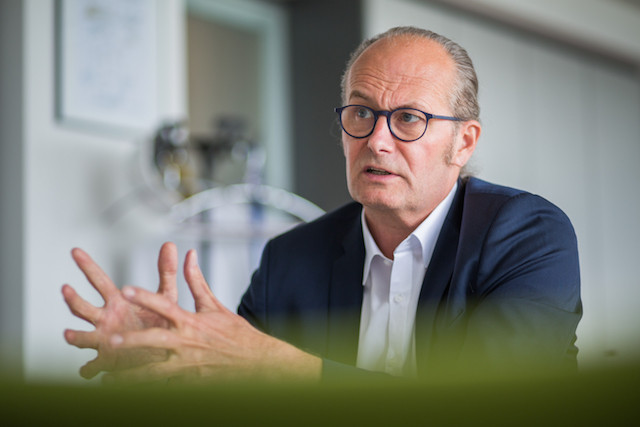Speaking on the sidelines of a press conference to announce a call to tender for photovoltaic installations to benefit from lucrative feed-in tariffs, energy minister Claude Turmes (déi gréng) told Delano that Luxembourg was part of an EU project and would “probably get one hydrogen station in the next two years.”
Located on the corridor between Amsterdam and southern France, the minister said Luxembourg was well-placed to benefit from this through-traffic. He added that a further two hydrogen stations were in the planning stages but cautioned that hydrogen-fuelled vehicles were less of a priority than electric vehicles because of their inferior effiency. “Hydrogen is three times less efficient than electric because you have to produce hydrogen […] through an electrolyser and that process isn’t efficient yet.”
60% of energy consumption
Transport is by far and away the biggest consumer of energy, accounting for 60% of energy consumption in Luxembourg, according to the ministry. This is followed by industry at 16%, homes at 13% and tertiary at 11%.
Luxembourg’s goal is to generate 11% of its total energy consumption from renewable energy sources by 2020. According to the latest data, Luxembourg generated 6.4% of all its energy needs from renewable sources in 2017.
The minister said that solar generation had stagnated in recent years to reach 131 MW in 2018. A measure aimed at encouraging cooperative solar installations introduced in April means the government is currently processing applications that could generate a further 50MW.
New feed-in tariffs
New maximum tariffs announced on Tuesday, which are aimed at encouraging larger installations on buildings, industrial sites, garages and bodies of water, would generate a further 40MW, Turmes said, bringing the total generation from solar to 220 MW. This would cover the consumption of over 130,000 households, according to estimates.
The maximum tariff system proposed applies for new installations for a maximum of 15 years.
The rates are as follows:
- Industrial site: between 500 kW and 5MW, at a rate of €89/MWh
- Buildings: between 200 and 500 kW, at a rate of €120/MWh
- Buildings: between 500 kW and 5MW, at a rate of €115/MWh
- Shelters or bodies of water: between 200 and 500 kW, at a rate of €145/MWh.
- Shelters or bodies of water: between 500 kW and 5MW, at a rate of €140/MWh.
The rates are higher compared to neighbouring countries, a deliberate move in order to help “kick off this solar revolution”. Turmes said they take into account the fact that land in Luxembourg is more expensive than in France or Germany.
The minister estimated that if installation costs around €8,000, the returns could exceed this investment by up to €3,000.
“Investing today in solar is for sure more profitable than leaving your money in a bank account. And solar energy is a proven technology so there is no risk,” he said.
Luxembourg has also encouraged investment in off and on-shore wind turbines. According to figures published by the energy ministry, 255 GWh of energy was generated through wind in 2018.
